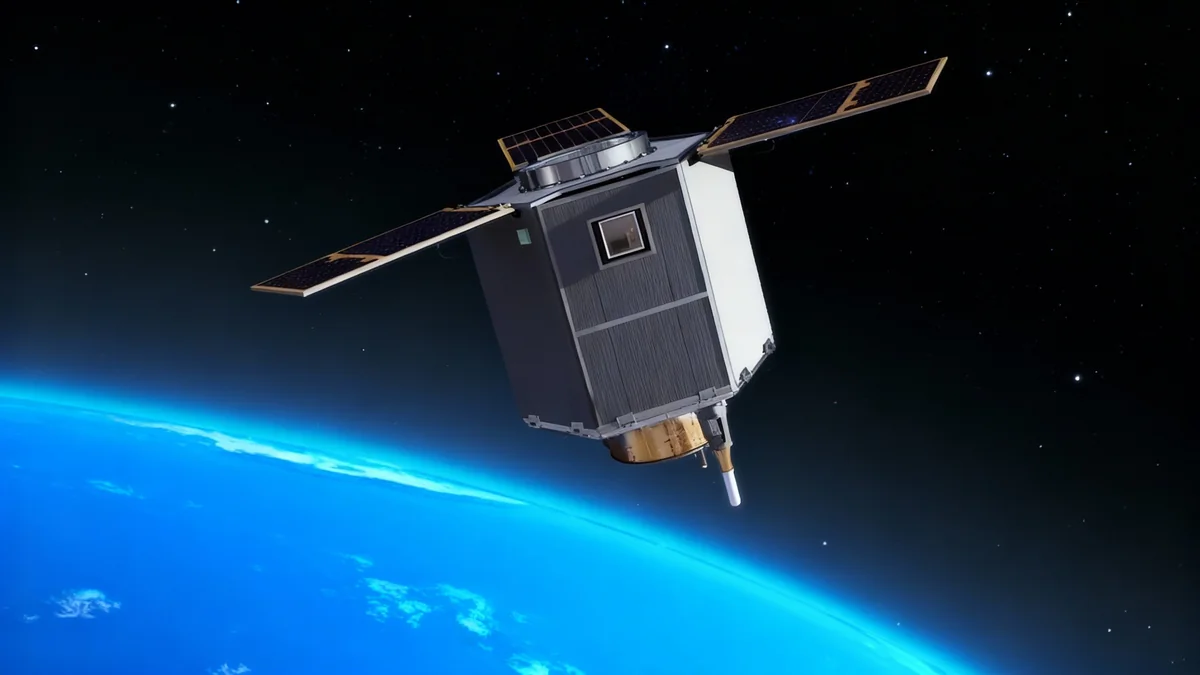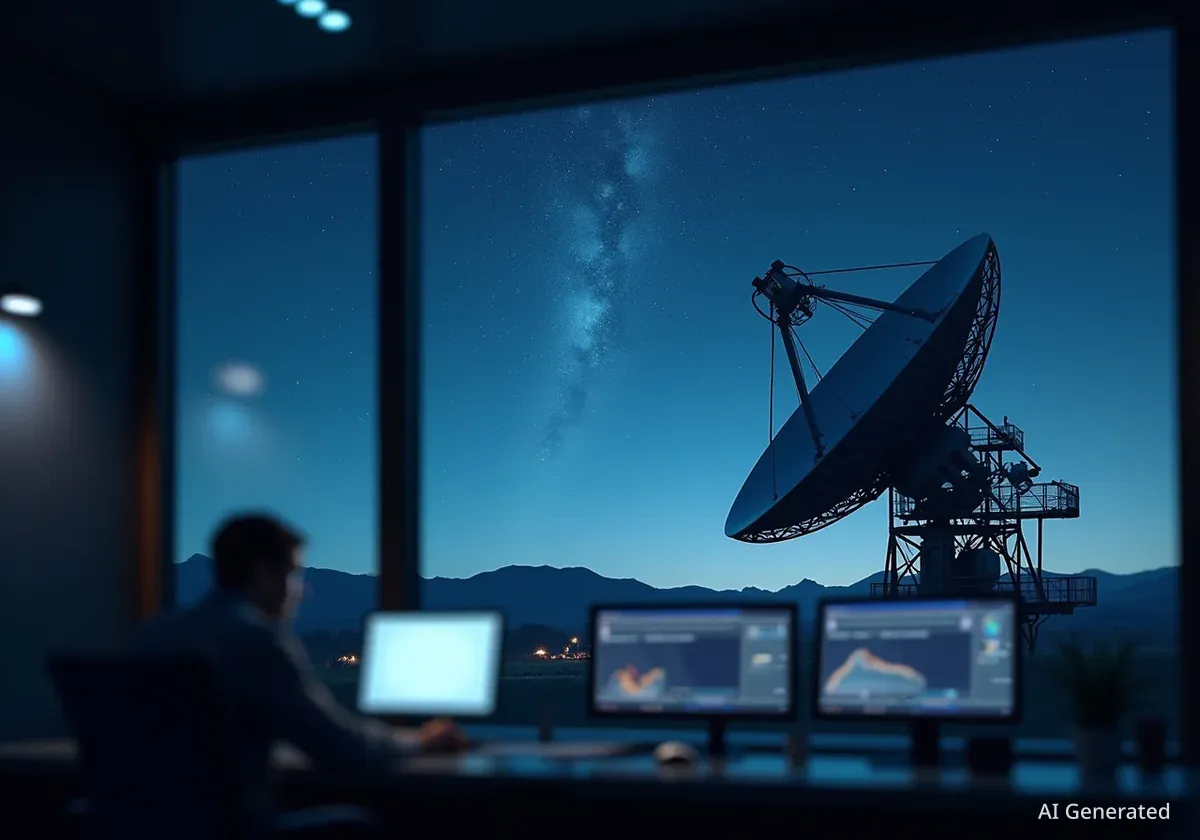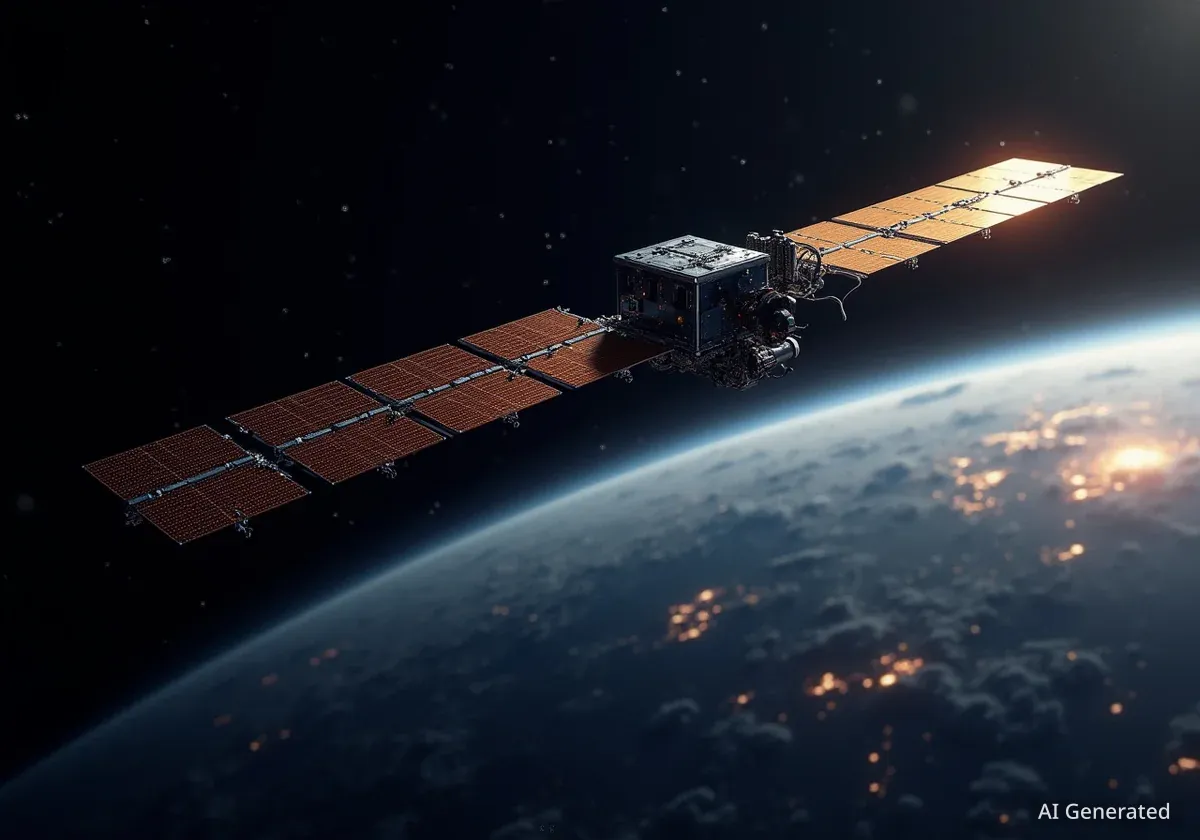Researchers in China have announced a potential breakthrough in space-based radar technology, claiming it can detect and track stealth aircraft from orbit. This development, if validated, could challenge the long-standing strategic advantage of advanced military aircraft like the F-22 Raptor and B-21 Raider, which are designed to be nearly invisible to conventional radar systems.
The new method reportedly overcomes a critical obstacle known as background clutter, where radar signals reflecting off the Earth's surface create overwhelming noise. By successfully filtering this noise, the system can isolate the faint signature of a moving stealth target, operating continuously day and night, regardless of weather conditions.
Key Takeaways
- Chinese scientists report a new method for detecting stealth aircraft using space-borne radar.
- The technology is designed to overcome intense background signal clutter from the Earth's surface.
- Unlike optical satellites, this radar system can function 24/7 in all weather conditions.
- If proven effective, this capability could significantly diminish the strategic value of stealth technology in modern warfare.
The Enduring Challenge of Stealth Detection from Space
For decades, military strategists and engineers have considered the detection of stealth aircraft from space using radar to be a nearly insurmountable task. The core principle of stealth technology is to minimize an aircraft's radar cross-section (RCS), making it appear as small as a bird, or even an insect, on a radar screen.
While it is theoretically easier to detect a stealth aircraft from directly above in low Earth orbit, where its shape is less optimized for deflecting signals, this advantage is negated by a much larger problem: ground and sea clutter. The Earth's surface, with its mountains, waves, and varied terrain, reflects radar signals in a chaotic and powerful manner.
This intense background noise effectively creates a massive electronic smokescreen. The faint, fleeting signal of a stealth aircraft moving hundreds of miles below is easily lost in this overwhelming clutter, making reliable detection from orbit historically unfeasible. This challenge was a key reason why multi-billion dollar stealth programs like the F-22 and B-21 were approved and developed.
What is Background Clutter?
In radar terminology, "clutter" refers to unwanted echoes or signals that interfere with the observation of a target. For a space-based radar looking down at Earth, the primary sources of clutter are the ground and the sea. Rough ocean surfaces and mountainous terrain reflect radar energy in unpredictable ways, creating a noisy background that can be thousands of times stronger than the signal reflected by a stealth aircraft.
A New Approach to Signal Processing
The recent study from China outlines a novel technological approach designed specifically to solve the clutter problem. While the precise technical details remain closely guarded, the research suggests a sophisticated system for identifying and isolating the unique characteristics of a moving target's signal from the static, yet powerful, background noise.
The system is believed to work by analyzing subtle variations and patterns in the returning radar echoes. By understanding the predictable nature of clutter from a fixed geographical area, the technology can allegedly subtract this background noise, revealing the much weaker, but distinct, signature of an aircraft in motion. This would be a significant leap forward in signal processing and radar technology.
"The ability to reliably distinguish a target's signature from intense background noise has been the holy grail of space-based radar surveillance. This research suggests a potential pathway to achieving that capability."
This development is not happening in a vacuum. It represents a continuous effort by global powers to develop countermeasures to stealth technology. The successful implementation of such a system would require immense computational power and highly sensitive radar hardware deployed in orbit.
From Optical Limitations to All-Weather Capability
China has previously demonstrated its ability to track stealth aircraft using different methods. The Jilin-1 commercial satellite constellation, for example, successfully captured images of an F-22 fighter jet in flight. This achievement proved that optical satellites could, under the right conditions, be used for military reconnaissance.
Optical vs. Radar Satellites
- Optical Satellites: Function like powerful cameras in space. They provide high-resolution images but are limited by daylight hours and clear weather. Clouds, fog, smoke, and darkness render them ineffective.
- Radar Satellites: Actively transmit radio waves and analyze the returning echoes. Because they provide their own illumination, they can "see" through clouds and darkness, enabling 24/7, all-weather surveillance.
However, optical systems have inherent and significant limitations. They are entirely dependent on clear weather and daylight. In a real-world military scenario, where operations often occur at night or in adverse weather, relying on optical tracking is not a dependable strategy. This is why military commanders universally prefer radar satellites for critical surveillance missions.
The shift towards a functional space-based radar system for tracking stealth targets represents a major strategic evolution. A network of such satellites could provide persistent, uninterrupted monitoring of airspace over vast regions, removing the cover of night and weather that stealth aircraft often rely on for operational security.
Strategic Implications for Global Air Power
The potential authentication of this technology in real-world scenarios would have profound implications for global military doctrine. The United States and its allies have invested trillions of dollars over several decades to develop and maintain a fleet of stealth aircraft, which form the backbone of their air superiority strategy.
The core purpose of stealth is to penetrate sophisticated enemy air defenses undetected, allowing for precision strikes on high-value targets. If a nation can reliably track these aircraft from space, this foundational advantage is severely eroded. The era of complete stealth dominance could be challenged.
Key Potential Impacts:
- Reduced Survivability: Stealth aircraft like the F-22, F-35, and B-21 Raider would become more vulnerable as their movements could be tracked, allowing defensive systems to be cued and prepared.
- Shift in Military Investment: Nations might re-evaluate massive investments in next-generation stealth platforms if their primary advantage is compromised.
- Increased Importance of Other Technologies: The focus could shift towards electronic warfare, hypersonic weapons, and resilient networked systems to ensure mission success.
It is important to note that these findings are based on a study and have yet to be independently verified or demonstrated in a large-scale, operational context. However, the research signals a clear direction in China's military technology ambitions and highlights the ongoing cat-and-mouse game between stealth and counter-stealth capabilities that defines modern aerospace development.





